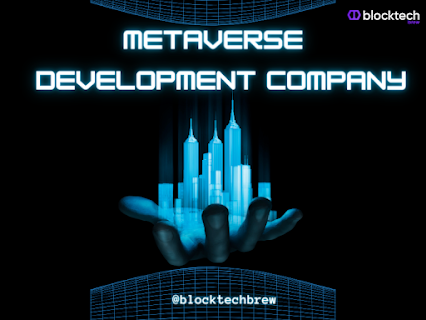Building the Metaverse: Insights into the Development Process
The concept of the metaverse has captured the imagination of both technology enthusiasts and the general public alike. With its potential to revolutionize how we interact, work, and play in virtual environments, the metaverse has become a focal point for developers and innovators. In this blog post, we will delve into the metaverse development process of building the metaverse, exploring the key insights and considerations that drive this ambitious undertaking.
Defining the Metaverse
Before diving into the development process, let's briefly define what the metaverse is. The metaverse refers to a collective virtual shared space, created by the convergence of physical and virtual reality. It is a fully immersive, interactive, and interconnected world where users can engage with each other and digital objects in real-time.
Insights into the Development Process
Collaborative Ecosystems:
Building the metaverse requires collaboration across various domains, including software development, virtual reality (VR), augmented reality (AR), blockchain technology, artificial intelligence (AI), and more. Developers must form ecosystems that bring together expertise from multiple disciplines to create a cohesive and seamless experience. Collaboration between different teams and industries is crucial to address the complex challenges and ensure interoperability within the metaverse.
Open Standards and Interoperability:
To enable a truly immersive and interconnected metaverse, the development process must prioritize open standards and interoperability. This means that different platforms, applications, and devices should be able to seamlessly interact and share data. Open standards promote inclusivity, foster innovation, and prevent fragmentation, allowing users to freely navigate and engage with the metaverse regardless of their preferred hardware or software.
Scalability and Performance:
Creating a metaverse that can accommodate millions, if not billions, of users simultaneously requires robust scalability and high-performance infrastructure. Developers must design architectures that can handle the massive influx of data, user interactions, and computational demands. Utilizing cloud computing, distributed systems, and edge computing technologies can help optimize performance and ensure a smooth user experience within the metaverse.
User-Centric Design:
The metaverse should prioritize user-centric design principles to enhance user engagement and satisfaction. Developers need to create intuitive interfaces, customizable avatars, and immersive experiences that cater to users' diverse needs and preferences. User feedback and testing play a crucial role in refining and improving the metaverse's design, ensuring it remains accessible and enjoyable for everyone.
Privacy and Security:
As the metaverse becomes an integral part of people's lives, privacy and security concerns become paramount. Metaverse Developers must embed robust privacy controls, data protection measures, and secure identity management systems into the fabric of the metaverse. Implementing decentralized technologies, such as blockchain, can enhance data privacy, transparency, and trust within the metaverse.
Ethical Considerations:
Building the metaverse also raises ethical considerations that need careful attention. Developers must ensure inclusivity, diversity, and representation within the virtual world to avoid perpetuating real-world biases and discrimination. They must also establish guidelines and mechanisms to prevent misuse and abuse of the metaverse's capabilities, such as regulating virtual economies and combating cybercrime.
Iterative Development and Community Involvement:
The development process of the metaverse is an iterative journey. Developers must actively engage with the community, gather feedback, and iterate on their designs based on user experiences. This iterative approach allows for continuous improvement, adaptation to evolving technologies, and the exploration of new possibilities within the metaverse.
Conclusion
The development of the metaverse is an ambitious and complex endeavor that requires collaboration, openness, scalability, user-centric design, privacy, ethics, and iterative development. By embracing these insights and considerations, metaverse developers can pave the way for a metaverse that connects people, breaks down physical barriers, and offers limitless possibilities for communication, creativity, and exploration.




Comments
Post a Comment